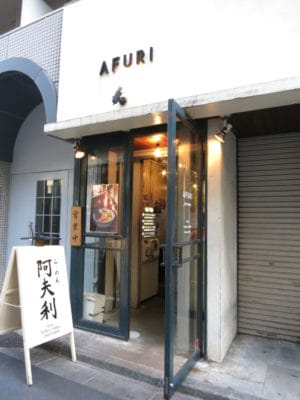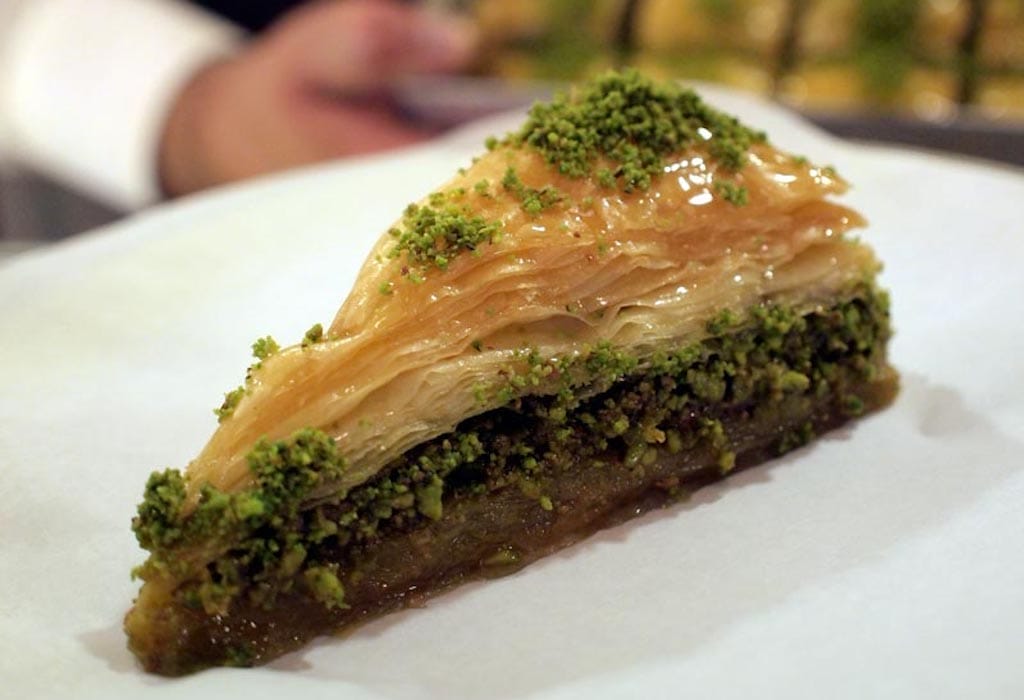Once the province of late-night slurping at street carts or standup counters, instant meals and cheap dining, ramen has undergone a renaissance over the last 15 years, making it onto haute hipster tasting menus in the West and creating punishing waits outside the “it” ramen-ya of Tokyo and Osaka.
As the New Year began we decided to revisit the roots of classic ramen dining in Tokyo and paid a visit to the original Afuri ramen stand in Ebisu. Could it already have been 14 years since this place opened its doors to a hungry mob? Tucked into a back street in the warren that surrounds Ebisu station and facing the back exit of Ebisu yokocho (the newest trendy eating alley in Tokyo), this clean, well-lighted place has stood the test of time and continues to thrill.
Stepping inside and navigating past the waiting throng, we found the same reassuring meal ticket vending machine purring in the doorway. Veterans know which buttons to push and exactly how much they need to deposit in the coin and bill slots. Newcomers usually have a well-researched idea of which delight they will go for.

Afuri serves light, bright-tasting ramen with eye appeal and enticing flavors. Unlike most classic ramen places, this one offers vegetarian and vegan options, as well as an outstanding gluten-free one. The most popular choice is the signature traditional yuzu ramen, scented with a generous amount of the fragrant citrus fruit. It comes with shio (salt) broth or shoyu (soy sauce) broth. The broth itself is possibly the healthiest version of ramen soup possible because it’s made from chicken and dashi (kelp and bonito) broth.
Customers choose their preferred amount of chi-yu or chicken oil. Tanrei is the usual amount and allows the broth to shine through. Those who want a bit more of an umami kick and a thicker mouth feel order mashimajima.
Balanced on top of the noodles are an exquisite raft of cha shu pork, half a soft-boiled egg, mizuna, menma (bamboo shoots) and a wisp of nori (seaweed). While we waited for our ramen we watched a chef lightly grill the cha shu over charcoals in the back of the kitchen.
Afuri is always pleased to cater to vegetarians and serves “Seasonal Vegan Ramen” with fresh vegetables brought in from Kamakura every morning swimming in a broth of onion, carrot, celery and olive oil. The eatery also marks the changing seasons with appropriate ingredients, serving sakura (cherry blossoms) salt ramen in spring, kuri (chestnut) bamboo noodle ramen and a winter miso ramen.
 In warmer weather one can enjoy tsukemen, bouncy cold noodles served with dipping sauce on the side. There is yuzu-tsuyu tsukemen that is almost a deconstruction of the yuzu ramen, with the noodles served with the same citrus-scented broth on the side. Ama-tsuyu tsukemen is served with a dipping sauce based on the ramen broth with the addition of seafood soy sauce. If hot weather brings a craving for spicy noodles (sweating helps you cool down), Afuri offers kara-tsuyu tsukemen, which adds a serious chili oil kick to the same dipping sauce.
In warmer weather one can enjoy tsukemen, bouncy cold noodles served with dipping sauce on the side. There is yuzu-tsuyu tsukemen that is almost a deconstruction of the yuzu ramen, with the noodles served with the same citrus-scented broth on the side. Ama-tsuyu tsukemen is served with a dipping sauce based on the ramen broth with the addition of seafood soy sauce. If hot weather brings a craving for spicy noodles (sweating helps you cool down), Afuri offers kara-tsuyu tsukemen, which adds a serious chili oil kick to the same dipping sauce.
Although the ramen is usually served with noodles made from wheat and rye flour, there is also a hand-made whole-wheat noodle that is denser and chewier called temomi, as well as gluten- and egg-free noodles made of konjac, also known as shirataki, or Japanese yam. Konjac is a subtropical plant native to parts of Asia and known for its many health benefits, including detoxifying properties. It is considered the perfect diet food because it has zero calories and is very high in fiber. Konjac is also popular among vegans and is often used as a substitute for seafood. Both the temomi and konjac noodle options carry an extra charge and need to be paid for with a separate ticket from the vending machine at the door.
Speaking of that machine, it holds tickets to many other treasures. One sure way to bulk up the meal is with a side of gohan, or rice. Aburi koro chashu gohan is topped with most of the ingredients from the ramen dishes; niku gohan comes with lots of pork belly with Japanese leeks; shirasu gohan is laden with grated daikon radish and baby anchovies; tare gohan has rice in the tsukemen broth; and, as on our last visit, there is often a special rice dish such as katsuobushi (dried bonito) gohan with soy sauce.
Other tickets will yield extra amounts of any ingredient. We usually make room for a specially brewed draft beer from Asahi breweries to complete the meal.
 May 14, 2021 Big-Time Baklava
May 14, 2021 Big-Time Baklava
Update: Rumeli Tatli ve Borek Evi are sadly no longer open.
Editor’s note: To […] Posted in Istanbul June 3, 2019 Moka Mornings in Naples
June 3, 2019 Moka Mornings in Naples
An espresso coffee is an integral part of most Neapolitans’ morning routine. We start […] Posted in Naples February 4, 2016 Loukoumades
February 4, 2016 Loukoumades
Update: Loukumami is sadly no longer open.
In the era of such food crazes as the […] Posted in Athens
Published on March 23, 2017
Related stories
May 14, 2021
IstanbulUpdate: Rumeli Tatli ve Borek Evi are sadly no longer open. Editor’s note: To celebrate Ramazan Bayramı, also called Şeker Bayramı, the three-day holiday at the end of the holy month of Ramadan, we are republishing this 2014 article about our favorite spots for baklava – sweets are an integral part of the festivities, which…
June 3, 2019
Naples | By Gianni Cipriano and Sara Smarrazzo
NaplesAn espresso coffee is an integral part of most Neapolitans’ morning routine. We start off our walk with a (small) cup of this potent brew and sfogliatella, a pastry first created in a Catholic convent near Naples.
February 4, 2016
AthensUpdate: Loukumami is sadly no longer open. In the era of such food crazes as the “cronut,” it seems that every city has its own classic fried-dough treat that is now being reimagined, and in Athens, loukoumades (think of them as the Greek predecessor of doughnut holes) seem to be getting a major overhaul as of…



















































































